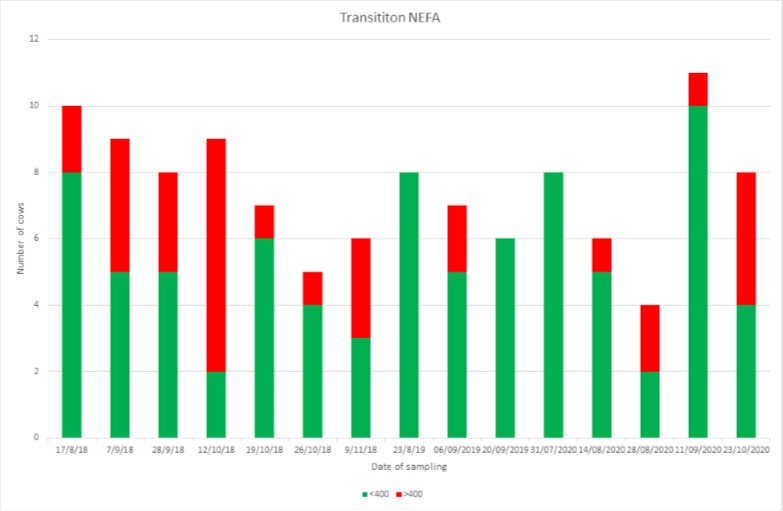Some of you will know that I am rather keen on investigating transition health and performance and one of my preferred techniques is to perform blood tests on dairy cows in the week before they calve in order to monitor energy balance and nutrition. This is important as cows which are in poor energy balance at calving can go on to develop all sorts of short and longer term problems. Various studies and practical experience show that when you get it wrong you see problems ranging from metritis, mastitis, retained cleansings, LDA soon after calving and later on fertility suffers with poor conception rates in that all-important 40-80 day service window. This is bad and we want to stop it happening.
One recent case has reinforced my enthusiasm for transition cow monitoring and I thought I’d write about it. The herd in question has around 400 cows and calves in late summer through the autumn and winter. 305 day averages are a shade over 10,000 and the plan is for dry cows to be split into far-off and close-up. With the close-up being a high straw inclusion ration. Over the past few year transition performance has been greatly improved by ensuring the ration is well-formulated and cows have plenty of space and minimal stress to a point where dry matter intakes have been great and fresh cow health hasn’t been a problem. We regularly monitor NEFA levels close to calving to ensure all is going well. So imagine our surprise when we had a spike in NEFA levels in our close-up cows this October when Claire persevered to get the bloods done despite a busy morning on the routine. On the face of it nothing had changed but when we dug down, the far-offs had been brought in about 5 weeks before and once we checked on their ration it was too good. The far-offs were being OVERFED resulting in problems closer to calving. This was quickly corrected but 5 weeks later I did a DA op on a cow in this herd. She was one of the ones that had been overfed and we couldn’t do much about her, (although in hindsight I wish we’d used some Kexxtone in the highest risk animals) but luckily we had already corrected the cause. We all get things wrong from time to time but the important thing was that if all we had done was monitor problems like DAs we would have been 4-5 weeks behind. By early monitoring we picked up a problem early, corrected it and minimised problems.

